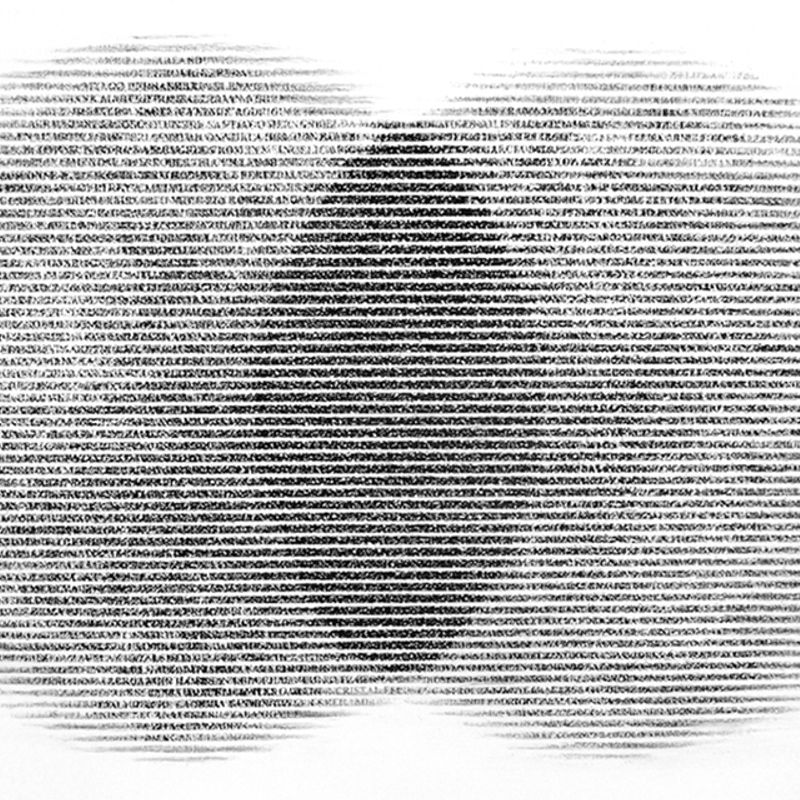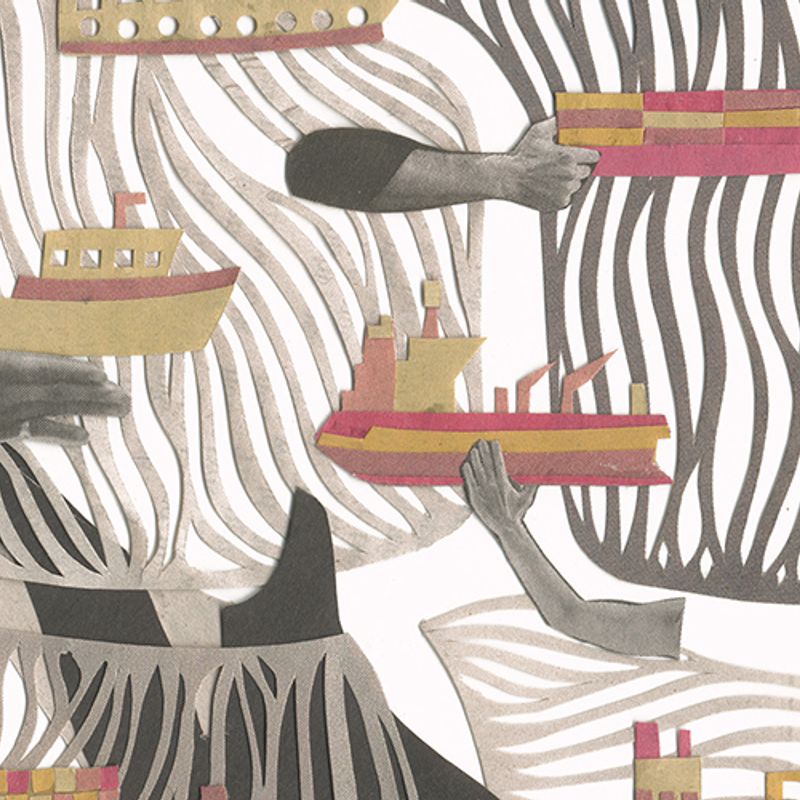The Disappearing Center: An Interview with Janet McAdams
by Beth StaplesPoetry editor Lesley Wheeler talks to Janet McAdams about indigenous poetry, middle age, discovering translating, and micro-reviews for the Kenyon Review.
Lesley Wheeler: What has changed in the publication and reception of indigenous poetry since I interviewed you in 2005? Natalie Diaz just won a MacArthur grant, and Poetry recently featured a Native Poets folio edited by Heid E. Erdrich, but the Earthworks Series you and I discussed was short-lived. My own sense is that in the U.S., more voices are getting into print, but I wonder to what extent that’s a side effect of receiving the review books you pick out for me for the Kenyon Review Online.
Janet McAdams: The Earthworks Series ran for ten years, although to be sure in the last few years most of the titles were translations, rather than Indigenous poetry. Salt, like many independent presses, struggled after the economy’s downturn, and distribution became so difficult we no longer felt it was possible to disseminate the books as they should be. I am grateful to the poets who entrusted me with their books, and we published some extraordinary works, titles by LeAnne Howe, Gordon Henry, Heid Erdrich, Diane Glancy, Kim Blaeser, Deborah Miranda, Carter Revard, James Thomas Stevens, Allison Adele Hedge Coke, Cheryl Savageau—to name a few. And Allison edited the two Effigies anthologies of chapbooks by emerging Indigenous authors, many of whom are now vital participants in the new generation of Indigenous poetry.
But to speak more specifically to your question about the landscape of U.S. poetry, I believe the micro-reviews I edit for the Kenyon Review reflect what’s really going on out there. Who ever expected this, this wild and rich flourishing of so many different poetries, different, yes, in all the ways people intend when they trundle out that tired rubric diverse. I’d say inclusive but that, too, is a problematic term, one that presupposes a center opening up. Instead, I’d say the finally and rightfully besieged center is now so displaced, one might hope it could actually disappear. I don’t mean to dismiss the institutional powers that yet privilege white and wealthy and straight and male writers. Creative writing programs have long been bastions of New Critical values and are thus complected, and TPTB continue and will continue, until someone stops them, to hire people who look and think just as they themselves do. But who are the poets being read and discussed by this generation of readers? And what kinds of formal practices and possibilities are now on the table? It’s an amazing time for poetry and I hope the micro-reviews reflect that.
Lesley Wheeler: Your poems in the current issue of Shenandoah are from a new collection in progress, Out Late. It’s partly about middle age, a subject I’m obsessed with. Will you tell us about the project?
Janet McAdams:Well, middle age is such a curious rubric, isn’t it? It seems to suggest a threshold, the space between one life and another, but culturally it’s figured as anything but. There’s a lateness to middle age and I’m curious about that quality of the late, belatedness, and, especially, lateness, as trope, lens, shift in register. The twinned, paradoxical notions of too late and of the glowing urgency lateness foists upon us. We pretend that time is/was already always there and that it is scalable, but in fact it’s something largely made up, and it claims what space it can. I’m interested in lateness not as a time period but as a temporality. Carolyn Forché has that marvelous poem “Selective Service” in The Country Between Us in which time is constructed by a particular historical moment. “In what time do we live,” her speaker asks, “that it is too late / to have children?” That line has haunted me for years. In what time(s) do we live now when it is too late to recover all my generation fought not to lose? Are we out too late? Did we stay out too late?
So in the collection—so far, anyway—are poems concretely about certain losses, about coming out, about coming out late, about staying out late. I want to put into conversation the very different lateness of when I was younger, the late-night culture of my twenties and early thirties, with the lateness that haunts me these days, not only in relation to my own life and choices that may be closed off or closing off as I age. But lateness as an historical moment, a condition even. I wrote about environmental apocalypse in my first book in ways that were angry, fearful, and in ways that imagined a world that might come. Now, that next world seems at hand, as much a condition of affect as melting polar caps or a Texas-sized island of plastic in the Pacific. And it is the nature of that affect I want to try to grasp, to document. LW: You’ve also been publishing translations. What attracts you to the practice and how is it affecting your other writing? Discovering translation has been one of the great joys of my writing life. I am fortunate to have been mentored by a superb translator and teacher of translation, Katherine M. Hedeen, who convinced me of its importance. The statistics are staggering—3 percent of all titles published in the United States are books in translation. They speak to the worst aspects of our solipsism as a literary culture. The website Three Percent reports that of that total, the 3 percent of all books published in the United States, really only 0.7 percent are poetry or literary fiction. Translation is a political act, an act of service. But I will say that although I began thinking of good literary citizenship, the pleasure of the work has surprised me. How much it is like writing a poem. How little it is like writing a poem. How one’s ego hovers and sometimes needs to be slapped out of the room.
It was a long apprenticeship. I am not one of those people to whom second languages come easily. So I had to, over the course of a number of years, regain the Spanish I’d lost, then learn a whole lot more. I audited Kate’s class on translation, and I studied translations, good and bad. And I’ve only just begun to publish some of this work.
Lesley Wheeler: I’ve also appreciated your commitment to curating reviews at the Kenyon Review Online, with an eye toward presses and projects that don’t always see a ton of attention. That’s a lot of work for a poet-teacher-scholar-editor who already has so many irons in the fire. How do you approach reviewing and why do you think it remains worthwhile?
Janet McAdams:I think one reason I started the Kenyon Review’s new series of micro-reviews was entirely selfish. I wanted firm deadlines to do something I was having trouble doing, in the midst of the teaching, writing, and editing you mention: finding time to read contemporary poetry deeply and carefully was difficult. That said, there are profound problems in the economy of poetry reviewing in the United States. A hard look at who and what gets reviewed—and by whom and where—really distills the current conversation about privilege and prejudice, a conversation that VIDA: Women in the Literary Arts has worked hard to keep lively and influential. It’s easy when you’re young to think that all or almost all that matters is getting your book accepted for publication. But extraordinary books of poetry get disappeared all the time and for all sorts of reasons. Given the pluralism of this moment in U.S. poetry, reviewers should do more than old-style vetting from a list of important titles. Surely it is also the job of the reviewer, if not their chief job, to ferret out work that compels them and make the case to their reader of the work’s importance. Tell me about that book I might have missed, those poems that deserve to be read and that I deserve to read.

